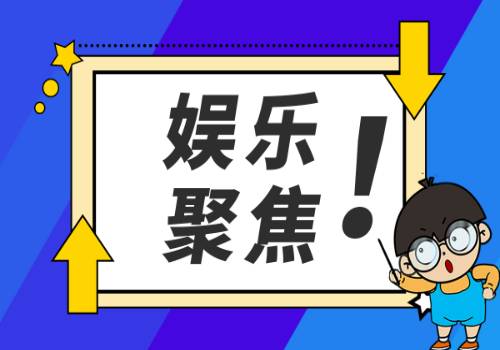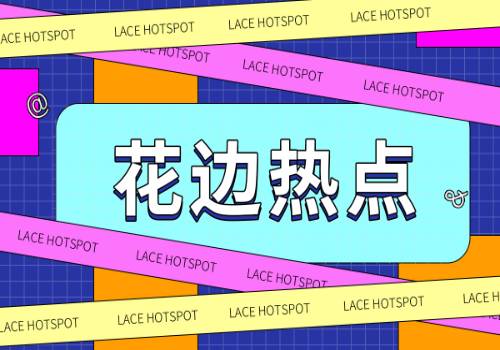LI MIN/CHINA DAILY
Editor"s note: July 1, 2023, marks the 102nd anniversary of the founding of the Communist Party of China. Three experts share their views on the Party"s governance and the far-reaching impacts of its leadership on the country"s economy, trade, people"s livelihoods and culture.
Growth miracle stuns world
 (资料图)
(资料图)
By DAN STEINBOCK
Starting from the late 1970s, when the reform and opening-up policy was launched, the Communist Party of China has focused on de-collectivization of agriculture, opening up the country to foreign investment and advanced technology, and encouraging entrepreneurship.
With nationwide industrial takeoff, economic reforms broadened, while price controls, and protectionist policies and regulations were lifted.
Nothing exemplifies the success of China"s reform and opening-up more than Shenzhen. In 1979, it was a poor fishing village with some 20,000 residents struggling at subsistence level. Today, it has an urban population of almost 18 million and its per capita GDP (nominal) is more than $27,000, on par with Portugal and Bahrain. In this process, a special catalyst role was played by the special economic zones, which were initiated in coastal China.
In 2018, economic development in Guangdong province moved to a new stage with the launch of the Greater Bay Area, China"s "Silicon Valley".
Initially, like Western Europe and Japan in the postwar era, Chinese companies used to imitate global technology leaders. Today, Chinese innovators and high-tech companies such as Huawei and ByteDance (Tik-Tok"s parent company) are being imitated by global competitors and cooperators. Hence, the US" efforts to contain Chinese innovators in the name of "national security".
In four decades, Shenzhen has transformed itself from a poor village to one of the most advanced metropolises.
When reform and opening-up were launched in the late 1970s, the standard Western reform packages were shaped by the "Washington Consensus", which promoted disruptive liberalization, deregulation and privatization across the board. Such "reforms" primarily benefited foreign investors, domestic oligarchs and the informal economy, not the ordinary people.
That was not the Chinese path. The Chinese path favors stability, gradual advances and pragmatic experimentation.
While the CPC leadership with former president Jiang Zemin as its core further developed socialism with Chinese characteristics — through his "Theory of Three Represents" — it also launched a campaign against corruption in the 1990s. What paved the way for a decade of export-led double-digit growth was China"s membership of the World Trade Organization in 2001. And former president Hu Jintao highlighted the importance of "China"s peaceful development".
More important, under President Xi Jinping"s leadership, policies have accelerated China"s post-industrialization process.
Today China"s growth may be slowing relative to the recent past, but its per capita income continues to rise rapidly. In the new era, rebalancing builds on world-class innovation and expanding consumption. Moreover, the eradication of extreme poverty in a developing country of more than 1.4 billion people is a historic achievement.
It is this high-quality growth that supports the rise of the world"s largest emerging middle-income group. In 2017, a set of bold objectives for 2035 were adopted as staging posts to achieve the second centenary goal of developing "China into a great modern socialist country that is prosperous, strong, democratic, culturally advanced, harmonious, and beautiful" by the middle of this century. The goal is also to make China a global leader in science and technology, creating a green economy, and reducing the urban-rural income gap.
Through the 20th century, the major economies touted globalization that benefited mainly the West. Their exclusive globalization was supported by the World Bank, the International Monetary Fund, the World Trade Organization and other multilateral institutions. This status quo prevailed as long as the West drove global growth — that is, till the 2000s.
But the West"s exclusive globalization is de-integrating, thanks to the United States" two decades of "global war on terror" and half a decade of trade wars, the pandemic-induced global depression, the role of the US and NATO in inciting the Russia-Ukraine conflict, and global de-integration. In fact, the US" desperation to contain China"s peaceful rise is part of a broader effort to maintain Western supremacy.
As a percentage of the world"s GDP, world trade is at the level where it was around 2006. Worse, global investment net inflows as a percentage of global GDP are less than half of the level in 1999.
And as migration flows are being blocked, the number of forcibly displaced people has soared to almost 110 million, which is nearly three times the level of 1945 after the end of World War II.
Such a state of affairs is inhuman, destructive and untenable.
As secular stagnation is spreading in the West, growth prospects rely increasingly on China and other large emerging economies, which have fueled global growth since the late 2000s. These prospects are supported by the creation of the Asian Infrastructure Investment Bank, the BRICS New Development Bank, the Belt and Road Initiative, and the promotion of de-dollarization in bilateral trade.
The new emerging world economy now thrives on inclusive globalization, which seeks to lift all boats, not just a few. The future belongs to multipolar inclusion, not exclusion.
The author is the founder of Difference Group and has served at the India, China and America Institute (US), Shanghai Institutes for International Studies (China) and the EU Centre (Singapore).
The views don"t necessarily reflect those of China Daily.
Party leads building of modern civilization
By LIU DONGCHAO
Chinese civilization has a glorious history of more than 5,000 years. Still, building a modern civilization is a daunting task and a challenging project for the Chinese nation.
Since the First Opium War (1840-42), this project has covered two major stages: the preparatory period from 1840 to 1949 (founding of the People"s Republic of China), and the construction period from 1949 to the present.
After experiencing many ups and downs and going through arduous struggles, the Chinese nation has achieved significant progress in building or preliminarily establishing a modern civilization.
And all this has been achieved under the leadership of the Communist Party of China.
Marxism is a political and economic philosophy that uses materialist interpretation of historical socioeconomic development, or historical materialism, to understand social conflict, and dialectics to analyze social transformation.
However, to ensure it plays a key role in the transformation of Chinese society, Marxism must be combined with China"s reality and integrated with China"s fine traditional culture. This process can be called Sinicizing and modernizing Marxism.
In the process of building a modern civilization, the CPC, after going through the stages of exploration and summarization, gains and losses, and optimization and refinement for more than a century, has developed a massive, effective policy system.
From a legal perspective, this system covers several levels, from the Constitution to local regulations for cultural activities.
In terms of content, the system can be divided into two major parts: building of a material civilization and building of a spiritual civilization.
As for spiritual civilization, it includes the protection, inheritance and use of fine traditional culture, as well as modern socialist culture. Ample resources and the correct approach to handle those resources are required to build a modern civilization.
The CPC has attached great importance to cultural resources, in war times as well as during the socialist construction period.
In 1942, Chairman Mao Zedong called on the Chinese people to inherit the excellent literary and artistic heritage, both foreign and Chinese, critically absorb all things beneficial, and use them as reference when describing the lives of the people in their works. He went a step further in 1964 to propose the principle that encourages the Chinese people to use "the past to serve the present and the foreign to serve China".
After the launch of reform and opening-up, late leader Deng Xiaoping, reiterating this principle, stressed the need to dialectically handle domestic and foreign cultural resources.
And after being elected general secretary of the CPC Central Committee at the 18th National Congress of the CPC in 2012, Xi Jinping put forward the concept of creatively transforming and innovatively developing fine traditional Chinese culture and promoting exchanges and mutual learning among civilizations. Over the years, Party leaders have recognized the richness and importance of traditional and foreign resources, and proposed an effective way of using resources in the construction of modern Chinese civilization.
Especially in the new era, traditional and foreign resources have played a significant role in the construction of modern Chinese civilization. For example, ancient Chinese literature, poetry in particular, was once confined to books and exchanges among scholars. Today, TV programs such as the "Chinese Poetry Competition" have made millions of people appreciate poetry, and inspired more people to participate in poetry competitions.
The establishment of the national park system is another example. Originating in the United States in the second half of the 19th century, this system helps the authorities to better protect the environment and ecology including rare and threatened flora and fauna. China issued the overall plan for establishing a national park system in September 2017. And thanks to this system, China has better protected ecological and cultural resources.
Under the Party"s leadership, and due to people"s cultural contributions, China"s national characteristics are manifested in the inheritance of the outstanding traditional culture and core socialist values. They can be seen in the significant development of cultural facilities including museums, as well as in the systematic protection and use of intangible cultural heritage. They can also be seen in the rapid development of China"s science and technology sector.
According to the report of the 20th Party Congress in October 2022, China has built the world"s largest network of high-speed railways and expressways, as well as airports, ports, and water conservancy projects, power generation and supply infrastructure, while improving information and other infrastructure facilities. It has also become stronger in basic research and innovation, made breakthroughs in some core technologies, and boosted emerging strategic sectors. And these national characteristics, rich with contemporary connotations, are reflected in modern Chinese civilization.
The author is a professor in the department of literature and history research at the Party School of the CPC Central Committee.
The views don"t necessarily reflect those of China Daily.
BRI promotes inclusive globalization, peace
By HISHAM ABUBAKR METWALLY MOHAMED
Ten years after the launch of the Belt and Road Initiative, we can safely say that the initiative has been helping build an inclusive global economy.
In 2013, President Xi Jinping proposed the Belt and Road Initiative to help improve infrastructure connectivity between China and the rest of the world, especially Eurasia, the Middle East and Europe, and Southeast Asia and Africa.
From the initial 34 countries to more than 150 countries in the 10th year, the initiative has attracted three-fourths of the countries in the world and over 30 international organizations due to its development programs.
What"s more, the Belt and Road Initiative is in line with the United Nations Development Programme, the African Union"s Agenda 2063 development plan, and many other countries" development initiatives.
For example, during his visit to Saudi Arabia in December last year, President Xi and Saudi Crown Prince and Prime Minister Mohammed bin Salman signed agreements on "harmonizing" Saudi Arabia"s Vision 2030 with the Belt and Road Initiative.
And Egyptian Minister of International Cooperation Rania Al Mashat has said the Belt and Road Initiative is consistent with Egypt"s national development priorities and goals.
The initiative has strengthened infrastructure in partner countries, helping them pursue their development goals and bolster their industry, value and supply chains.
The Belt and Road Initiative is not only about building roads, railways, ports, dams and other infrastructure facilities, but rather a major global opening-up initiative. In fact, it has helped build hundreds of industrial parks around the world.
The Belt and Road Initiative also facilitates the development of e-commerce in partner countries, and promotes green development. In general, it is helping a large part of the global economy to shift to the green development path.
The initiative does not differentiate between small and big, or developing and developed economies, because it is focused on planning and building large-scale infrastructure development projects, improving connectivity, facilitating cross-border trade and investment, boosting cooperation among economies, and increasing people-to-people exchanges.
The volume of trade and investments under the Belt and Road framework increased from $1 trillion in 2013 to $2 trillion in 2023, an average annual increase of 8 percent.
Moreover, according to the World Bank, the Belt and Road Initiative is expected to reduce shipping time in Africa by up to 11.9 percent, and trade costs by up to 10.2 percent. Given that 90 percent of Africa"s imports and exports pass through the sea, this will enhance the efficiency of African ports and boost their cargo handling capacity.ً
Another example of the initiative"s achievement is the Ain Sokhna port project in Egypt, which aims to develop into an international trade hub and promote investment in the region.
Also, the International Highway Project in the United Arab Emirates, the Doha Port project in Qatar, the Tangier Med Port Development Project in Morocco, a railway project in Tunisia and other such projects have been successfully implemented.
Indeed, the Belt and Road Initiative has enabled the transfer of China"s high-quality infrastructure building technology and management expertise to the rest of the world.
However, the greatest aspect of the initiative is that it promotes peace, cooperation, openness, mutual benefit, helps develop mutual political trust, and facilitates economic integration for the benefit of all.
Furthermore, the initiative aims to help improve global governance and make economic globalization more inclusive and fair, while providing equal opportunities for all to achieve growth and prosperity.










































































